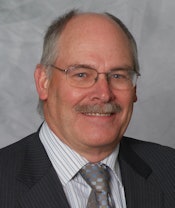
Minnesota's Medicaid dental reimbursement rates are lower than they were in 2000, which makes the state one of the lowest for reimbursements in the U.S. The state needs to increase dental reimbursements to improve access to dental care, particularly for special needs patients and other underserved populations, according to a report released March 8 by the state's Office of the Legislative Auditor.
"We also found that, historically, Minnesota's fee-for-service base rates for dental services have been low compared with rates of most other states, and Minnesota's rates are not based on the costs of current dental services," the report authors stated.
Many dentists have limited or stopped treating medical assistance (MA) patients, primarily due to low state payments, they found. Also, new limits on MA dental benefits for nonpregnant adults mean there are fewer reimbursable services.
 Michael T. Flynn, DDS, president, Minnesota Dental Association
Michael T. Flynn, DDS, president, Minnesota Dental Association
Michael T. Flynn, DDS, president of the Minnesota Dental Association (MDA), concurred with the report's findings, calling the state's dental care issue an "acute crisis."
"The state Department of Human Services (DHS) has known about these problems for a long time, but they have chosen to ignore the access problem. Minnesota has to accept responsibility for ignoring the dental program for decades," Dr. Flynn told DrBicuspid.com.
Dr. Flynn has a general practice in Lewiston, and nearly half of his patients are on Medicaid.
"I work for less reimbursed fees today than in 2000," he said, adding that current rates are based on 1989 dental charges, not current costs. "For every dollar's worth of care I deliver, I fund with a dollar of my own."
Minnesota ranks 43rd nationwide in dental reimbursements, a situation compounded by the fact that dentists and other healthcare providers must pay a 2% MinnesotaCare tax, Dr. Flynn noted.
'It's a money thing'
Between 2006 and 2011, about 65% of Minnesota's dentists provided care for MA patients, but by 2010 24% of dentists had stopped taking such patients, according to the report.
"How do you expect new dental graduates with $300,000 in debt to take Medicaid patients?" Dr. Flynn asked. "We have dental offices closing because they can't afford to treat state employees," he added, noting that state law requires dentists who treat public employees to also take Medicaid patients.
“Minnesota has to accept responsibility for ignoring the dental program for decades.”
Minnesota Dental Association
He pointed to the report's finding that North Dakota pays 185% of Minnesota's rates for some procedures and Wisconsin pays about 104%. Kansas, Alabama, and Michigan also have higher reimbursement rates, Dr. Flynn said.
"In states that have increased reimbursements, providers have stepped to the plate and provided care for people," he noted. "This is totally fee mismanagement by Minnesota."
Managed care organizations (MCO) -- not DHS -- determine how much they pay their dental providers, the report noted. MCOs often use fee-for-service rates as the starting point for setting rates, but MCOs often pay dentists in their network more.
The MCOs have received regular fee increases from the state, Dr. Flynn note, but the companies have not passed them on in dental reimbursements.
"Since 1998, they have gotten an increase in fees for capitation of 110%," he said. "Do you know what I got? Nothing."
Minnesota lawmakers recently introduced legislation (HB408) that would update MA base reimbursement rates to 75% of the 2011 median dental fee schedule. The measure is a step toward repairing the state's "broken system" as dental providers prepare for thousands of new MA patients entering the system under the Patient Protection and Affordable Care Act, the MDA noted. The bill would at least cover dentists' costs, according to Dr. Flynn.
He also noted a February report by the state health department that found that Minnesota spends an average of $49 million per year to treat dental problems in hospital emergency rooms. In addition, 55% of third-grade children had caries in 2010, higher than the national rate of 53% for children 6 to 9 years old.
"We're spending a dollar to save a dime," Dr. Flynn said. "Policymakers think dental care is option until they end up in ER.
Dental care accounted for only 3% of all MA program expenses, he noted.
Minnesota spent about $131 million in 2011 for dental services, up 9% since 2006. However, when enrollment changes are factored in, average spending grew only 2% annually, according to the report.
"It's a money thing, and we have to prioritize where we put it," Dr. Flynn said. "What about the kids who miss school because they're in pain, employees who miss work, and the elderly in pain in senior centers who can't get dental care? You can't quantify cost of pain, but it's there."
More findings from the report
The most recent MA rate increase was 3% in 2000; however, in 2011 the Legislature imposed a 22-month, 3% reduction in the rates, the auditor's report noted.
Low-income people -- particularly those with special needs or who live in rural areas – have difficulty finding dentists who will take MA patients, according to the report.
The report also included these recommendations:
- DHS should improve its information system to better support dental providers' inquiries of patient eligibility and restrictions on benefits.
- DHS should clearly define authorization criteria and benefit changes to dental providers.
- The Legislature and DHS should better coordinate payment policies and rate setting for MA dental services and increase fee-for-service payment rates.
In its response to the report, DHS supported all of the recommendations and noted that a 5% increase for MA dental services has been included in the governor's budget proposal.
"We appreciate that rates are a crucial factor in providing adequate access to dental services," Scott Leitz, DHS assistant commissioner, wrote in the response. "Other factors (such as professional shortages, patient adherence to treatment plans) also may impact access to services."
DHS also voiced support for the Minnesota's groundbreaking dental therapist program, the first state to allow midlevel dental practitioners.
"DHS is proud to support the use of advanced dental therapists and community health workers to advance new models to people enrolled in public programs," Leitz wrote.
The MA program provided medical and dental services to 910,000 residents in 2011, according to the report. Federal Medicaid law requires dental services for children, but states can provide additional benefits. Minnesota requires that limited dental services be available to adults.



















